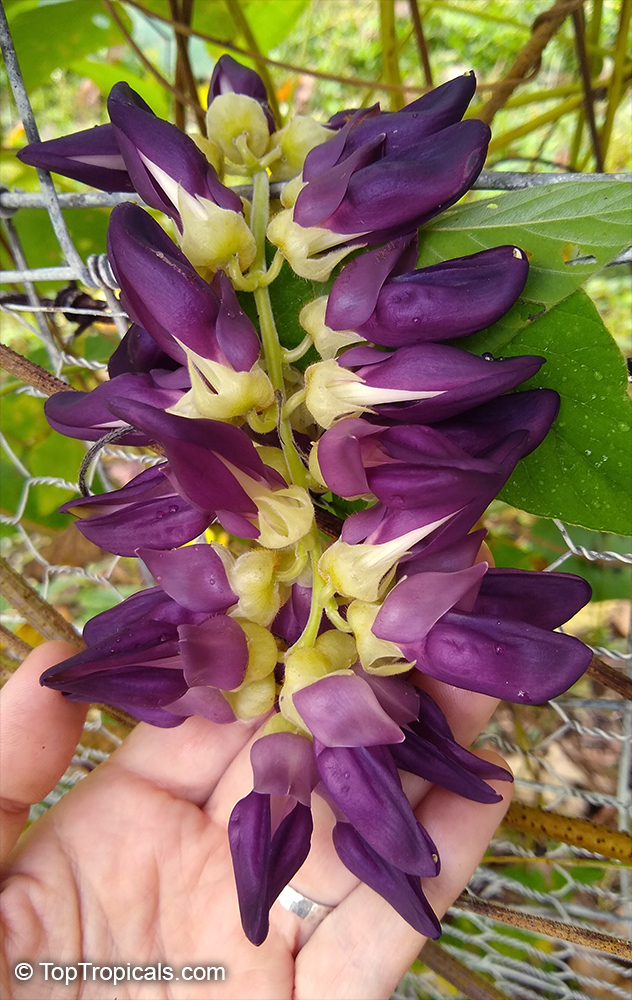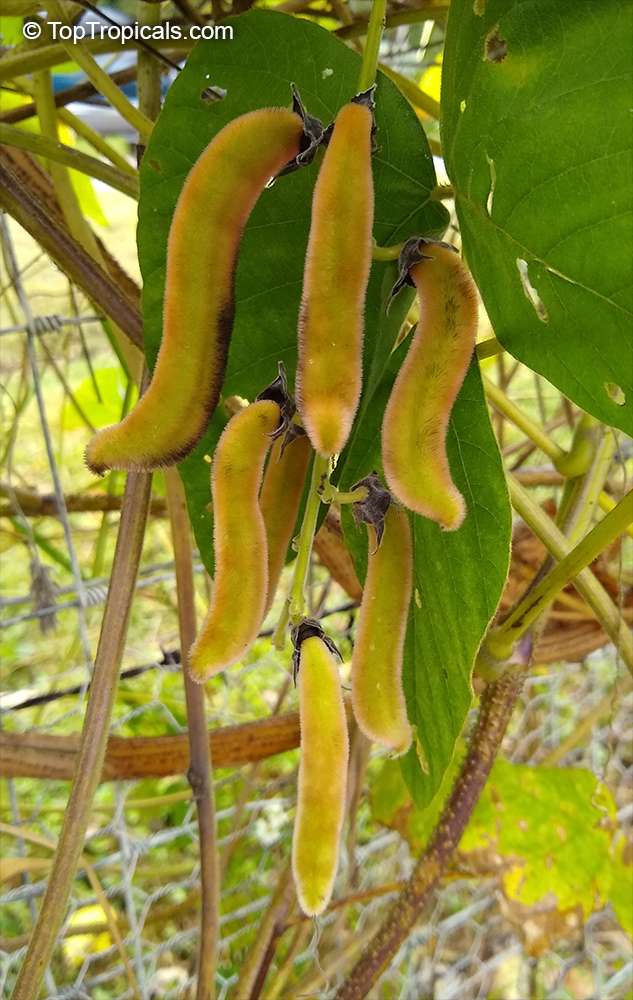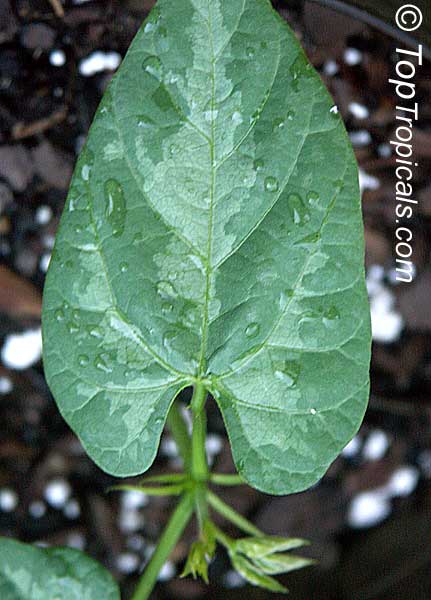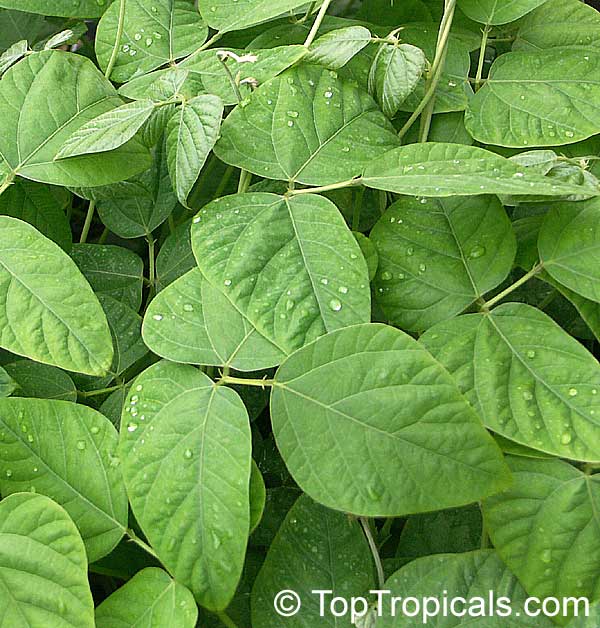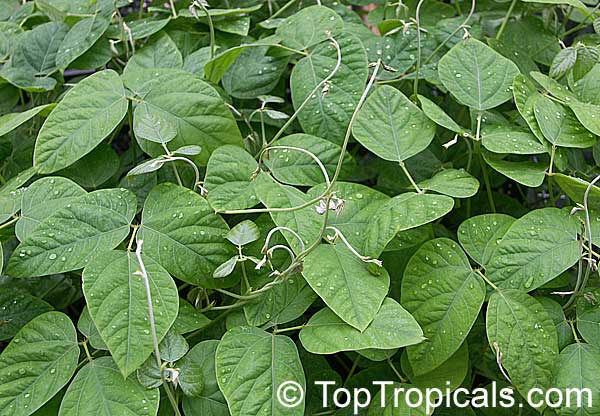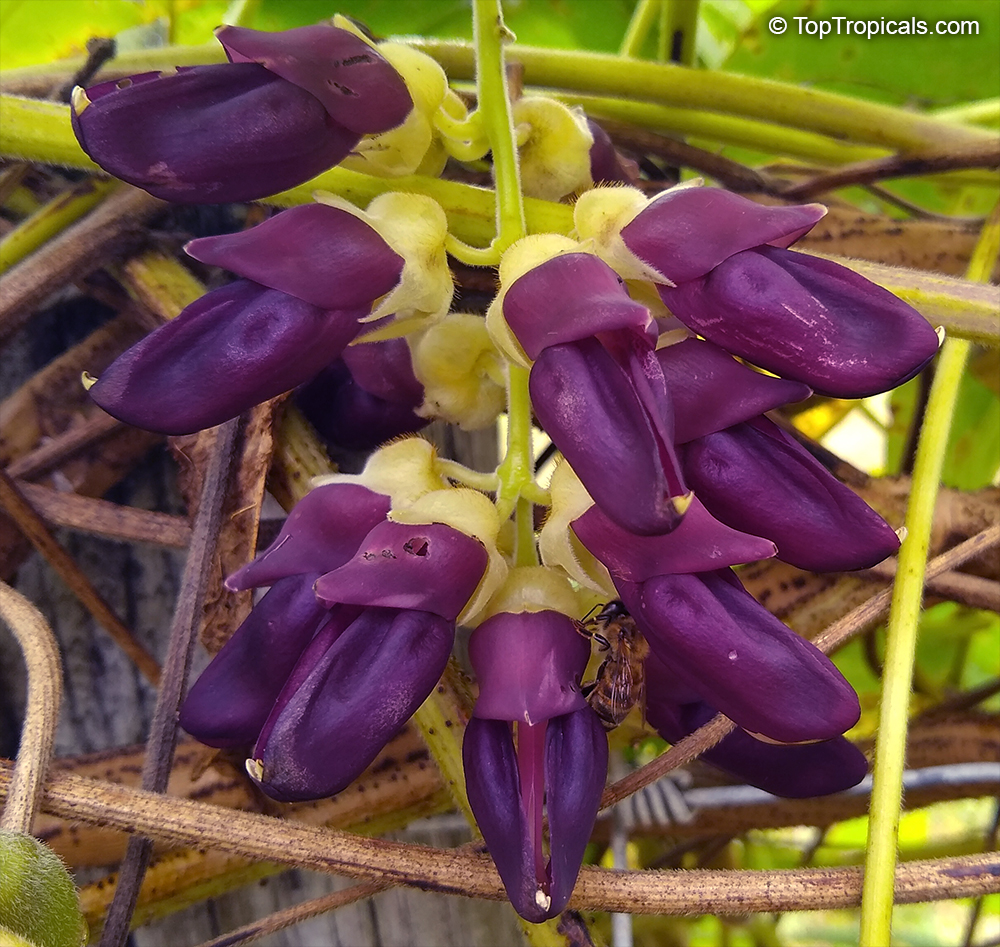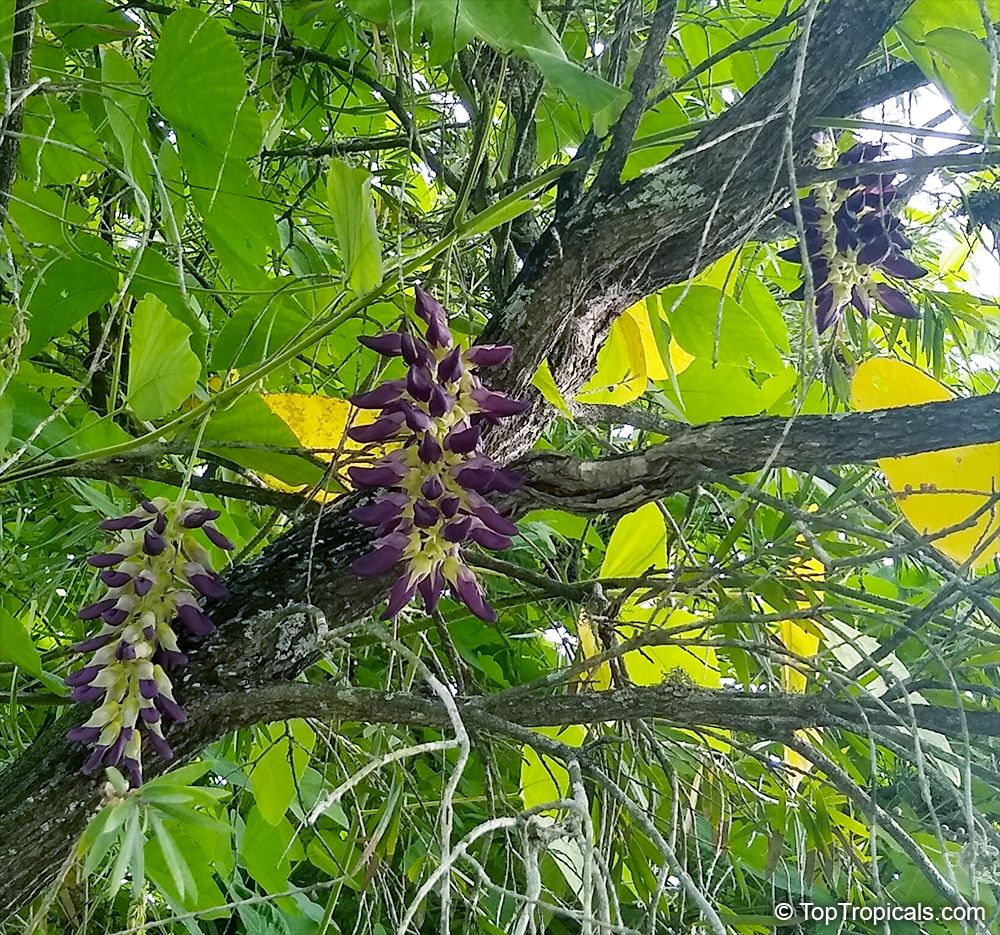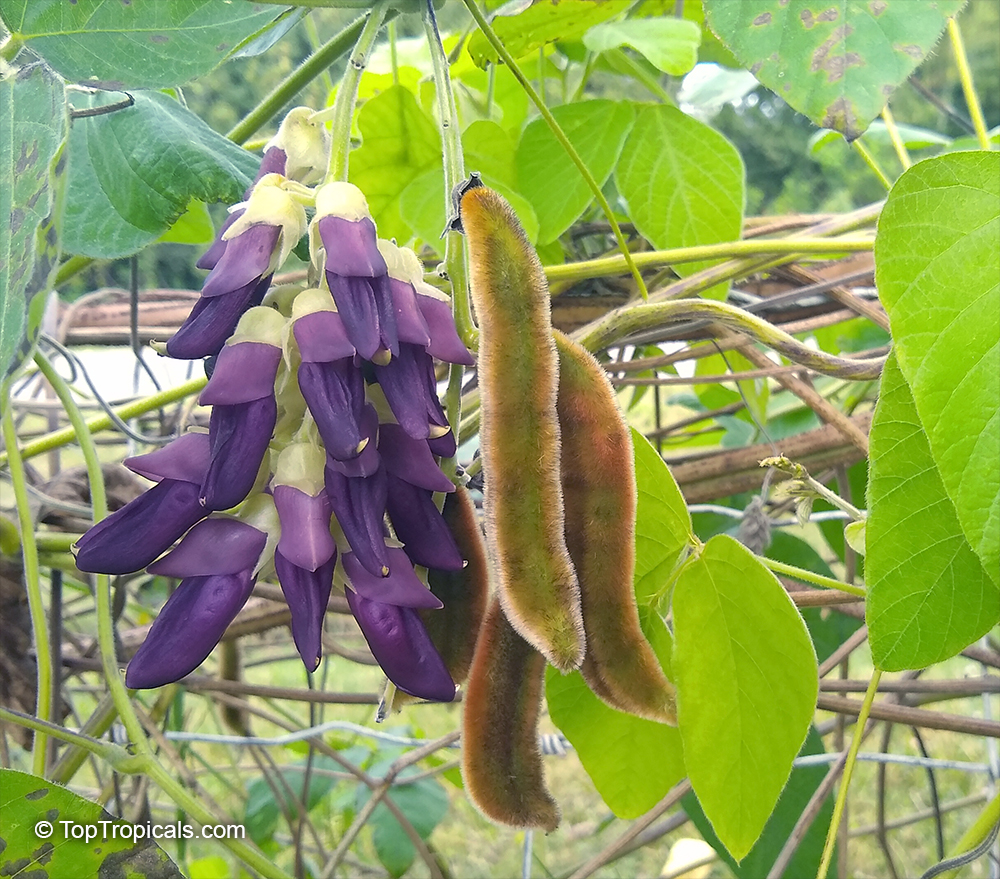Mucuna pruriens (Nescafe)
Top Tropicals Plant Encyclopedia
Botanical names: Mucuna pruriens, Carpopogon pruriens, Dolichos pruriens, Mucuna aterrima
Common names: Nescafe, Cowitch, Velvet Bean, Purple Jade Vine
Family: Fabaceae
Subfamily: Faboideae
Origin: Africa, India










Mucuna pruriens (Nescafe) is a vine with unusual royal purple flowers that grow in long clusters. It can reach heights of 50 feet or more and is native to Africa and India. The plant also produces clusters of pods that contain seeds known as Nescafe beans, which are covered in reddish-orange hairs that can cause skin irritation.
This ethnobotanical plant is attractive to butterflies and hummingbirds and thrives in full sun with regular watering. It can be grown in USDA Zones 9-11 and is tolerant of salt air and sea spray, making it ideal for seaside gardens. The plant produces flowers in shades ranging from pink, white, and off-white to blue, lavender, and purple.
The Nescafe beans and their pods are edible and contain valuable minerals, protein, and vitamins. They are used in many traditional and medicinal recipes. The plant has been used for generations in India for Parkinson's disease as it is thought to make dopamine, an important brain chemical involved in mood, sexuality, and movement. Additionally, the plant has antioxidant properties.
In Central America, velvet beans are roasted and ground to make a coffee substitute known as "Nescafe". The Ketchi indigenous people in Guatemala still grow Nescafe as a food crop, cooking the bean as a vegetable. Externally, the plant is applied to ulcers and is considered a diuretic, nerve tonic, and aphrodisiac.
In regions with cold winters, Mucuna pruriens can be grown in pots and brought outdoors in warmer weather. Make sure the potting soil is well-draining and that the plant receives plenty of sunlight. Regular watering is important, but allow the soil to dry out between waterings. Monthly feeding with a fertilizer formulated for flowering plants will promote blooming. Pruning the plant in spring will ensure a healthy and attractive appearance.
